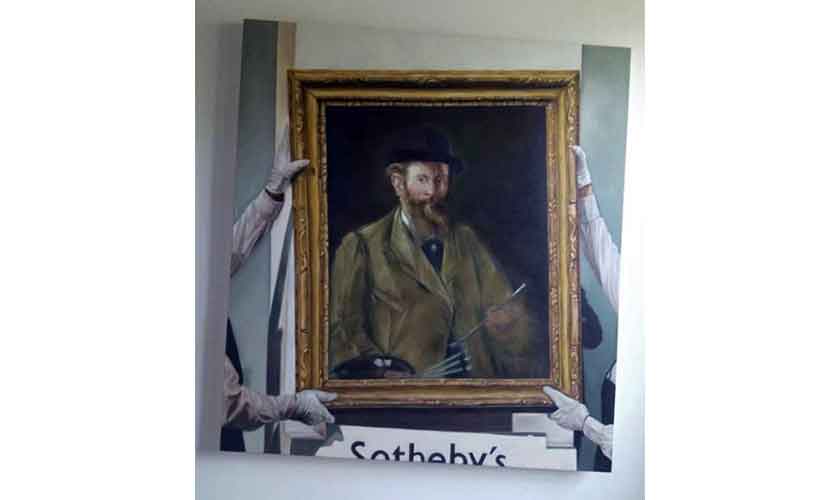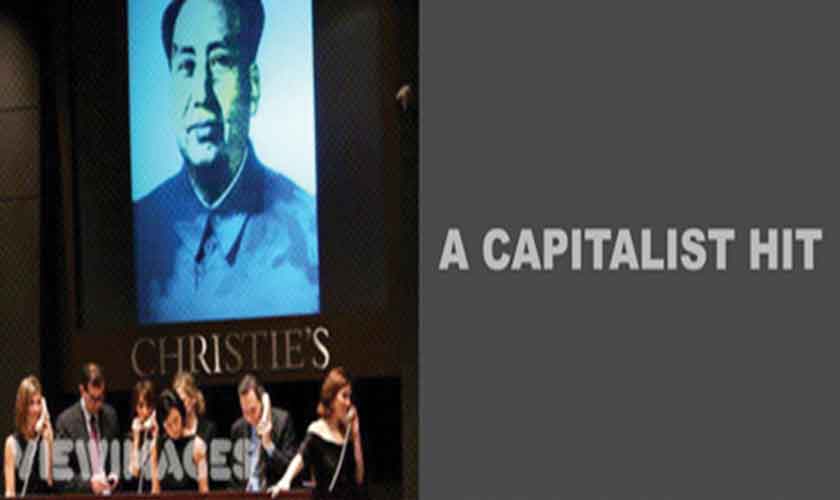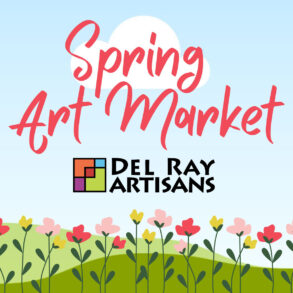ince its invention in 1839 until the last decades of the Twentieth Century, photography has been a privileged profession requiring a skill, gadgets (often expensive and imported), professional knowledge and a space to produce a picture. Photography studios provided one’s identity – for affixing on official papers, like passports, national identity cards, driving licences, domiciles, visa documents, etc. But after the circulation of smartphones and digital media, the previously used chemicals, photo-sensitive papers, printing laboratories, dark rooms and photographer’s speciality (power) have turned dysfunctional, are abandoned, and appear unnecessary.
In the selfie mode, today, one has become the model, photographer, director, editor and client. Perhaps, the structure of the art market may soon follow the same course. Traditionally, galleries have had the power (monopoly) to forge the careers of artists, by agreeing to exhibit their creations. So, people not familiar with the name or style of an emerging or unknown artist come and see his/ her work on display, to admire, acquire or reject. In order to help the creative individuals (and as a business strategy), gallerists manage a perfect order of installation, invite a lot of viewers – and potential buyers, print artist’s brief but impressive bio-data, artistic statements and frequently engage curators to add a new angle to the pieces made – usually without any link or cohesion while made in the artist’s messy, crowded and unkempt studio.
Some of them take a step further and contact art critics, reviewers and journalists to cover the exhibitions for print media, hoping to get positive and fruitful feedback. They also, invite important personalities from the press, other artists, prominent collectors and the art academia to dinner after the inauguration of the show. Efforts are made to promote, project and elevate the artist, because the more successful the artist, the more prosperous the gallery. This phenomenon is not specific to one city or country, but spread across the globe.
However, with the inception of social media networks, for instance X (formerly known as Twitter), Instagram and other platforms, now a maker of art is not solely dependent on the support of an art gallery, expertise of a curator or the word of a pen-pusher. He/ she can be a self-exhibitor, dealer, curator, commentator and the PR manager. Viewing is also not limited to a gallery’s inclusive invitee/ patrons list, or a certain art audience. It has expanded to regions far in distance and time. One may spot a work added on an artist’s page some years back, and decide to approach the maker situated thousands of miles away, to negotiate the price, matters of packing, schedule of shipping and the method of payment.
Art as a form of investment is a relatively new concept in our midst.
If this recent development has liberated a creative person to an extent, it has also hampered the quality of art. Any art teacher can testify that when asked about their inspirations, influences and references, most graduating artists cite unheard names who happen to be excessively visible on the Internet. The democratisation of art is commendable, but it has also eclipsed the discerning eye. One can call it discrimination based upon some (probably false) criteria. Buying books is one example of this process of value judgment. A browser on a bookstall cannot read the entire content of a 200-page book to determine if it’s worth buying or not, but a familiar author, a reputed publisher, a few blurbs on the cover and back-cover help towards taking a decision, which may prove wrong
at the end and the book disappointing and yet are necessary to pick one from hundreds of unknown titles.
If a new artist is able to exhibit works at an established gallery, known for representing major and significant practitioners, visitors would be inclined to attend the exhibition. This may open a whole new avenue – both for the buyer and the maker. Hence, the long list of recent graduates applying for group shows and solo exhibitions at a respected gallery. The gallery of high standing can guide a collector too in building a valuable (in every sense of the word) collection.
Collectors are a varied lot in Pakistan, not only in their taste, but in their approaches and origins as well. Some started filling their walls with original (unique) articles, some purchased for their personal likes, some on the recommendation of friends and professionals. But many of them have evolved into serious buyers, researching artists’ careers, future prospects, besides formal issues such as style, imagery, content. A number of collectors, comparatively young, have been concentrating on unknown artists who have demonstrated great promise at an early stage. Thus, one of them acquired a majority of the artwork from Waqas Khan’s first exhibition in Karachi for reasonable prices. Those are now worth a lot more money than what he paid. Likewise, people who got early Salman Toors from his exhibitions are now proud of their great investment.
Art as a form of investment is a relatively new concept in our midst. Thus, people purchase plots of land, get gold biscuits, put their money in the stock market, but seldom consider art as a means of making huge bucks. Although a small work on paper of an artist graduated in 1994 that was bought in 1995 for Rs 1,500 from his first solo show in Lahore, is now estimated at Rs 3 million. Compared to property, jewellery and cash, artworks in Pakistan are generally safe. Some years ago, an artist in Lahore created a piece of conceptual art, by composing 6 currency notes of Rs 5,000 each. The work was later sent to a gallery in Karachi. After a few months some gallery staff took Rs 30,000 away and left the empty frame, without realising that several other artworks in the same storage place were worth much more.
In present times, with NFTs circulating in the art market, the possibility of an artwork being stolen is not imminent, but one wonders if with the danger of theft suspended, artistic value of an artwork may also be decreasing.
The writer is an art critic, curator and a professor at the School of Visual Arts and Design at the Beaconhouse National University, Lahore
This post was originally published on this site be sure to check out more of their content








